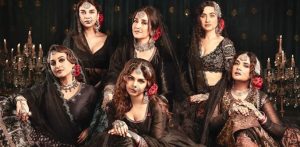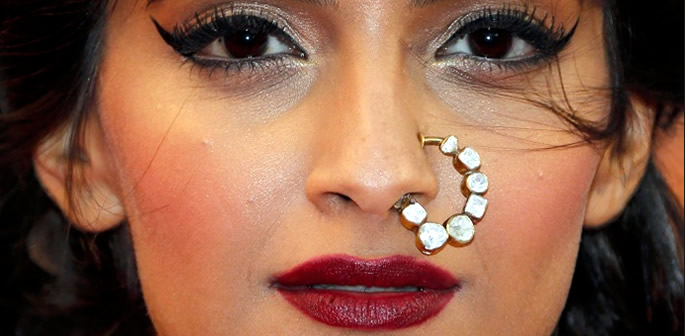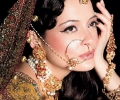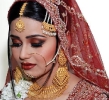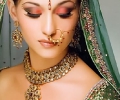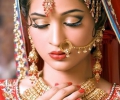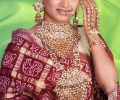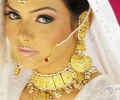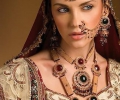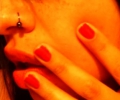In India, there are numerous names for nose jewellery
Nose rings were first founded in the Middle East, and were first introduced in the 16th century by the Mughals in India. During the Mughal Rule, nose rings were designed in one way, which were floral patterns. The nose rings would be made into a tiny flower followed by a small stem which was kept in place with a firm screw inside the nostril. Many times the nose rings would be decorated with pendants, stones, chains, to look more beautiful.
For thousands of years nose piercing has been a form of body art, or body decoration. Being a part of ancient people and native cultures, nose piercing has been adopted through time to the present where people express themselves by their nose jewellery.
The nose stud or ring does have an association with the Hindu religion but it is also worn by women from other faiths too, including, Muslim, Sikh and Christian.
In India, there are numerous names for nose jewellery. The most common ones are Nathni, Koka, and Laung. There are also two different types of nose piercings, which are the Phul and Nath. Opposed to a stud otherwise known as a Phul, the Nath can be quite large, often covering a part of the mouth or being tied by a chain to the earlobe. The Nath is most commonly worn during wedding ceremonies.

Many women prefer to have their left nostril pierced instead of their right. The reason for that is because that spot is associated in Indian Medicine, otherwise known as Ayuvedra. When the nose ring is pierced there, it helps female reproductive organs, and is supposed to make childbirth easier.
Back in the day, an Indian nose piercing was a symbol of virginity, known to many oriental countries such as India and Persia.

In some countries wearing a gold or diamond nose stud was forbidden by the government’s rules and regulations, if a woman were seen wearing one they could have been severely punished.
In South India, especially in Tamil Nadu and in parts of Andhra Pradesh and Karnataka, the nose stud known as ‘mookkutthi’ is widely worn compared to the nose ring, by both married and unmarried young women.
Nose piercing was discovered in the late 1960’s by the hippies. After making a trip to India, they had been fascinated by the koka and adopted it in the late 1970’s during the ‘Punk Movement.’ After being adopted by the hippies, the nose ring was then a symbol of rebellion against conservative values.
However, due to the acceptance of nose rings in the 1990’s as a fashion accessory, they are now considered to be a touch of style instead of a “rebellious act.” Over the decades many young and old have undertaken getting their nose pierced. Another reason why nose piercing is so common, is because it is a painless procedure. They are now popular in many parts of the world including the UK and other parts of Europe, USA, Canada and Australia.

Thus, today there are a variety of different types of nose rings available for people to wear. Though the traditional importance of the nose ring has not been forgotten, it has been making waves in contemporary trends and has become a fashion accessory for lots of women and some men too!
Check out our gallery of the different types of nose rings.











